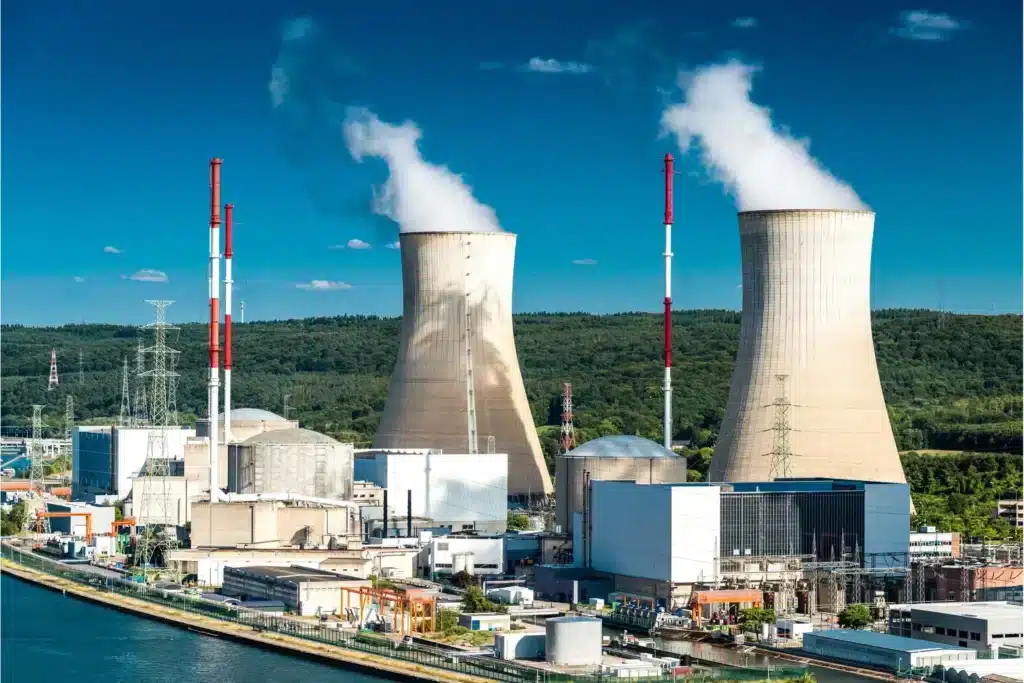Advanced Corrosion Control in Nuclear Power Plants

Advanced Corrosion Control in Nuclear Power Plants
As Pressurized Water Reactors (PWRs) across the globe continue to age, many surpassing the 40-year mark, asset integrity and corrosion control in nuclear facilities have never been more critical. Traditional methods, such as weld overlays (WOL) and component replacement, have long served as the industry standard for mitigating corrosion. However, these legacy approaches often involve significant cost, complexity, and added radiation exposure for maintenance crews. High Velocity Thermal Spray (HVTS) is a modern, field-proven technology that is transforming nuclear plant maintenance strategies for Class 2/3 piping and balance-of-plant (BoP) systems.
Why Corrosion Control Matters in Nuclear Plants
Secondary systems, such as feedwater heaters, steam generators, and condensers, are particularly vulnerable to corrosion mechanisms including:
- Flow Accelerated Corrosion (FAC) – Often found in high-energy steam and feedwater lines.
- Erosion-Corrosion – Common in turbine casings and extraction steam lines.
- Crevice Corrosion and PWSCC – Appears in confined spaces and high-stress zones.
- IGA/IGSCC – Occurring in grain boundaries of older alloys like Alloy 600.
Left unaddressed, these issues can lead to pipe rupture, unplanned outages, efficiency loss, and long-term safety concerns.
HVTS vs. Traditional Methods
Traditional solutions like weld overlay (WOL) and component replacement are often time- and resource-intensive. HVTS, by contrast, offers:
- No heat input → eliminates the need for post-weld heat treatment.
- High bond strength (>50 MPa) with no dilution or HAZ.
- Rapid application (40–60 ft² per gun per shift).
- ALARA-friendly by minimizing radiation exposure time.
These attributes make HVTS particularly suitable during tight outage windows and where dose reduction is paramount.
Proven Compatibility with Nuclear Operating Conditions
HVTS has demonstrated resilience in high-pressure, high-temperature environments, with successful field performance in:
- Wet/dry cycling
- Chloride excursions
- Shutdown oxygen ingress
Laboratory and field data confirm long-term resistance to FAC, erosion, and pitting, even under fluctuating redox conditions.
Cost, Safety, and Efficiency
HVTS is not a universal solution, but for many nuclear applications it delivers significant advantages where speed, safety, and asset reliability are priorities:
- Application times are 2–3X faster than WOL
- Reduced inspection intervals
- Lifecycle cost reduction
- Radiation dose minimization
- Field-verified durability of 15+ years
From Reactive to Predictive Maintenance
With HVTS corrosion protection, nuclear utilities are shifting from reactive fixes to a predictive, long-term asset integrity strategy. This approach helps plants meet modern regulatory and operational demands without compromising safety or budget.
Frequently Asked Questions
Q: Is HVTS a replacement for weld overlay (WOL)?
A: Not entirely. HVTS excels in Class 2/3 and BoP systems where heat input and radiation exposure are limiting factors. WOL remains necessary in pressure boundary components requiring complete metallurgical fusion.
Q: How long does an HVTS application typically last?
A: Field data across sectors suggest HVTS cladding maintains corrosion resistance for 15+ years under various conditions.
Q: What alloys are used in HVTS applications for nuclear plants?
A: Common materials include modified Inconel 625, C-276, and Stainless Steel due to their resistance to chloride attack, erosion, and crevice corrosion.
Q: How does HVTS support ALARA principles?
A: Faster application, no PWHT, and localized surface prep reduce worker exposure compared to weld overlay or full component replacement.
Q: Can HVTS be robotically applied?
A: Yes. HVTS is compatible with both manual and robotic application systems, allowing flexible deployment during scheduled outages.
